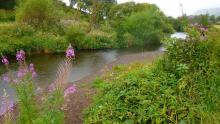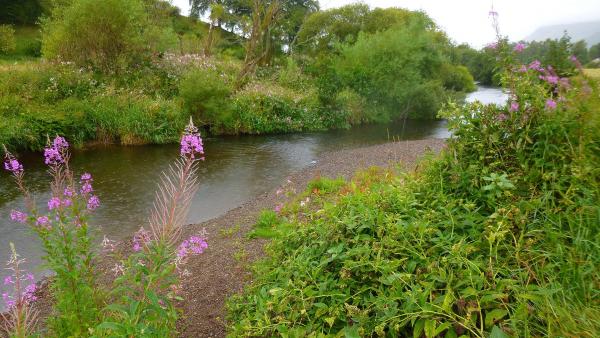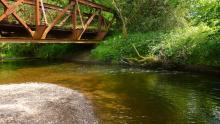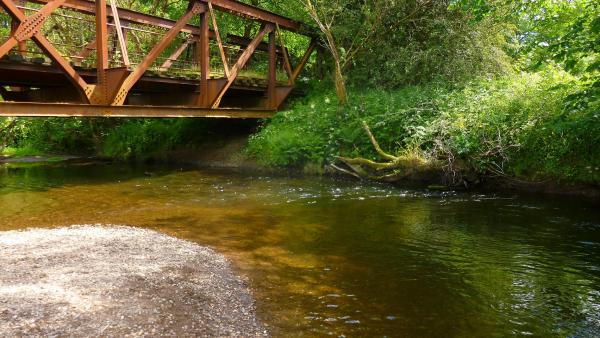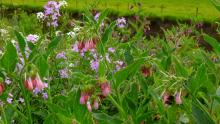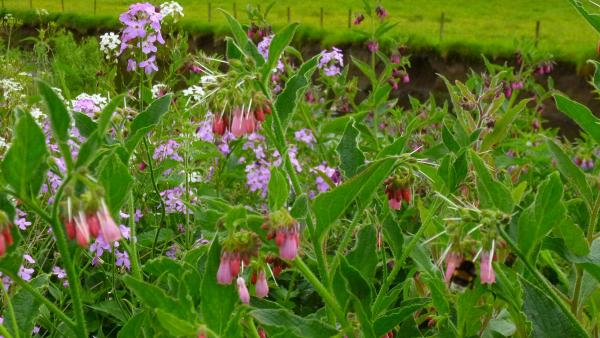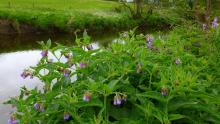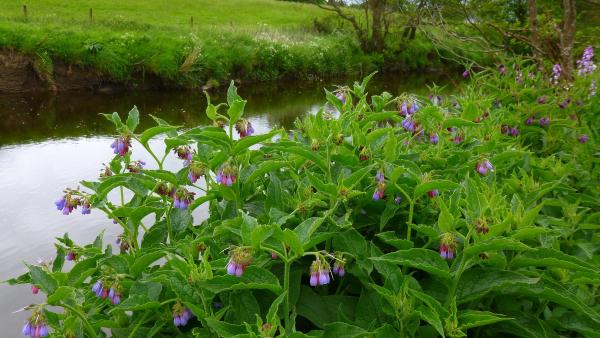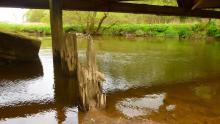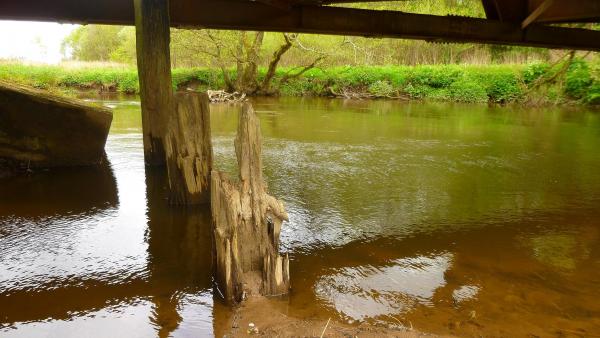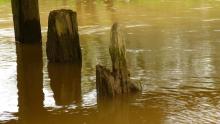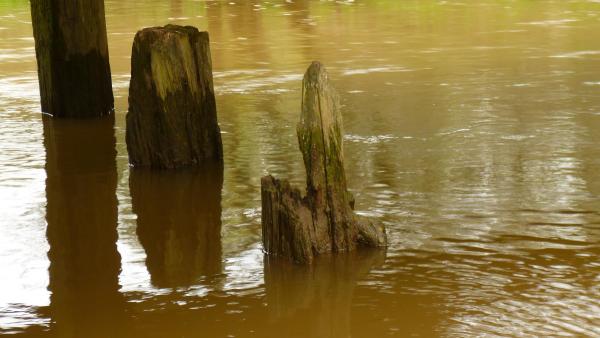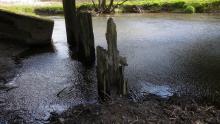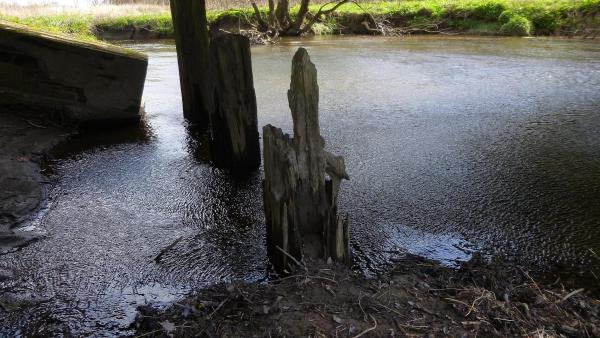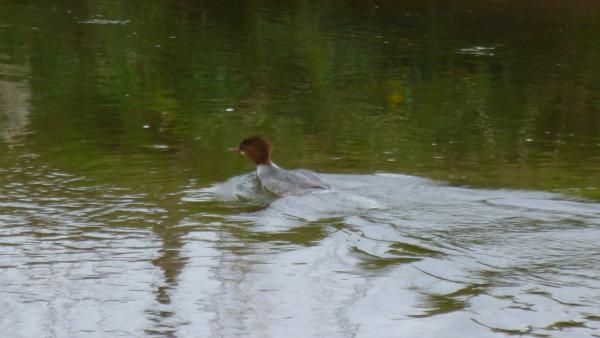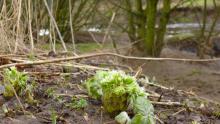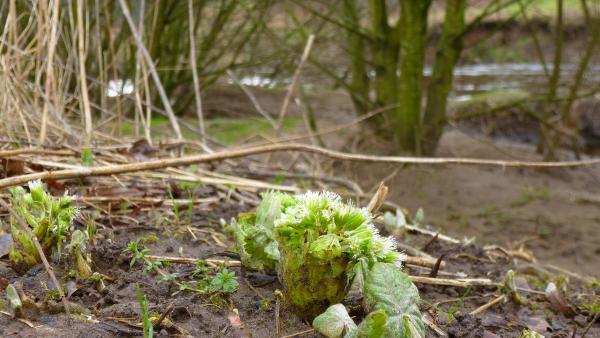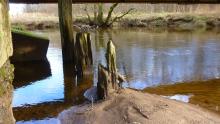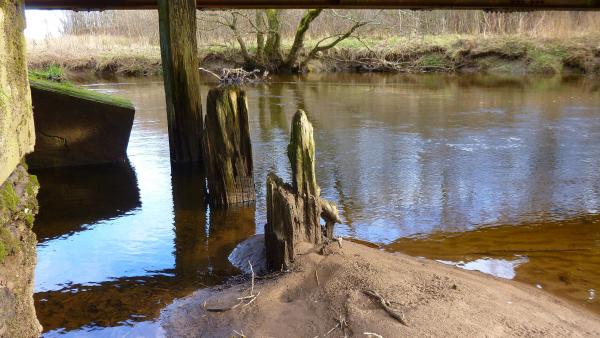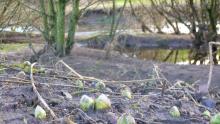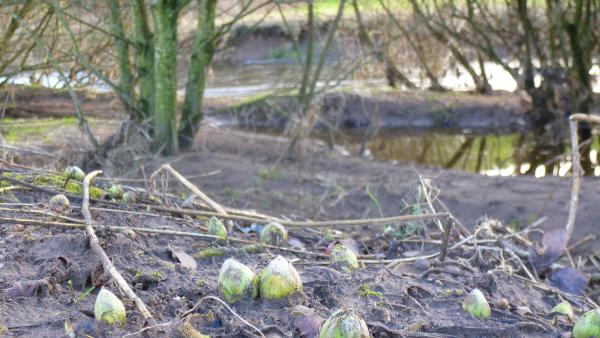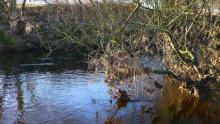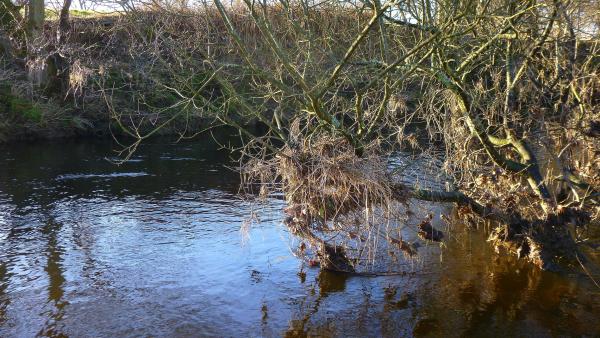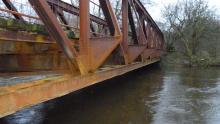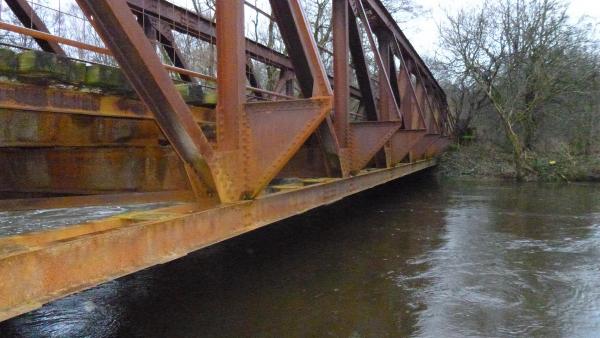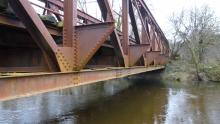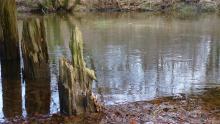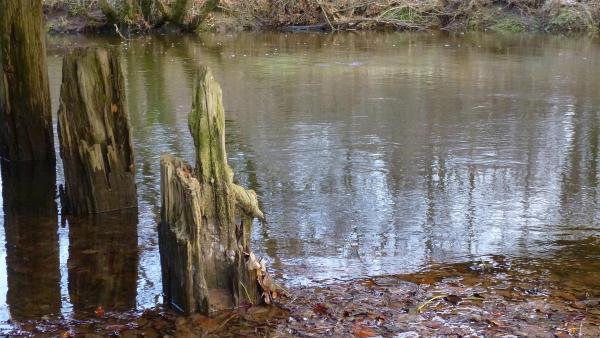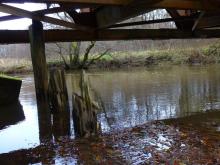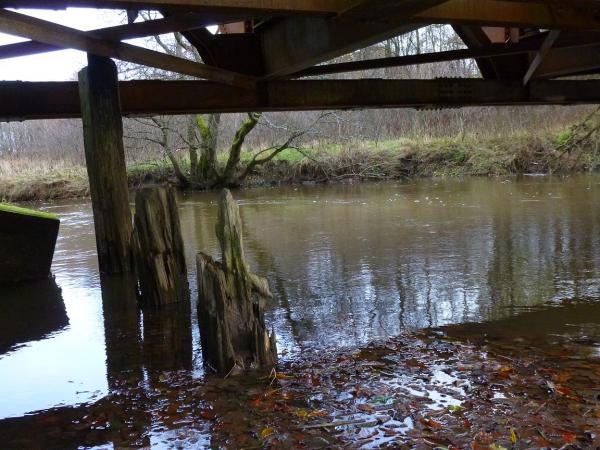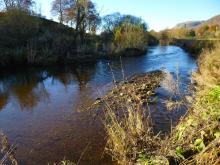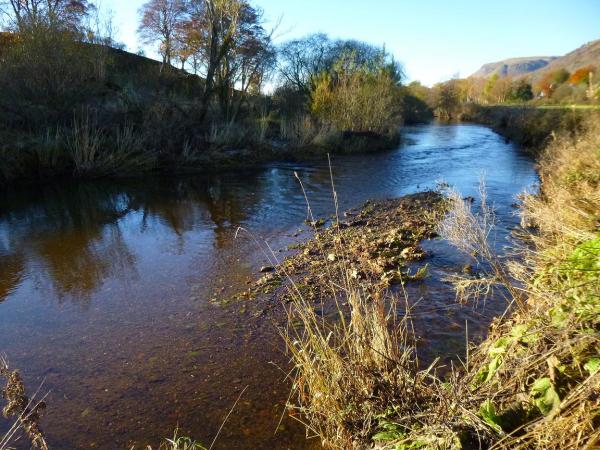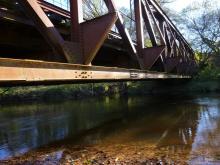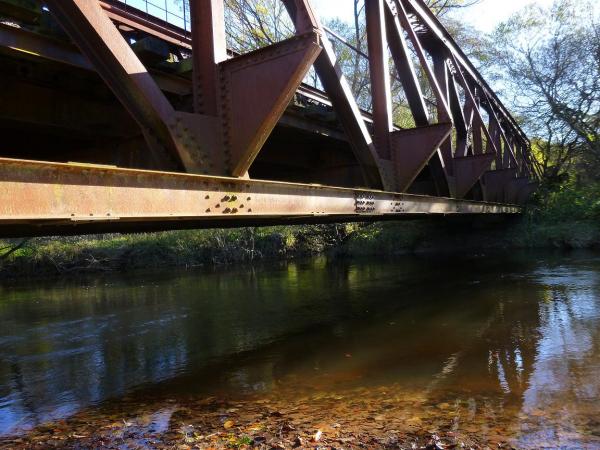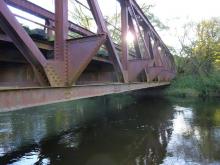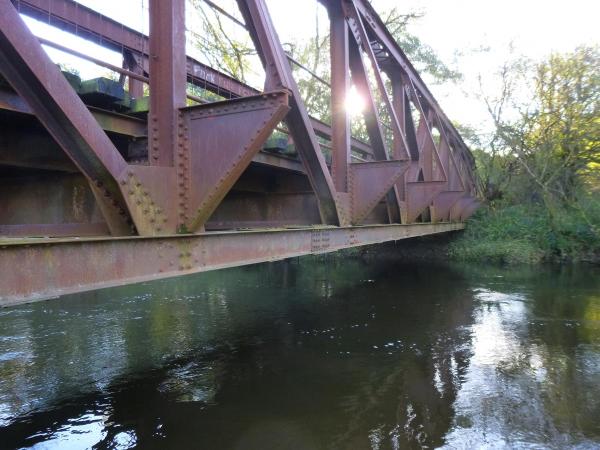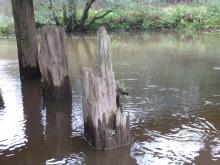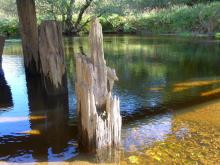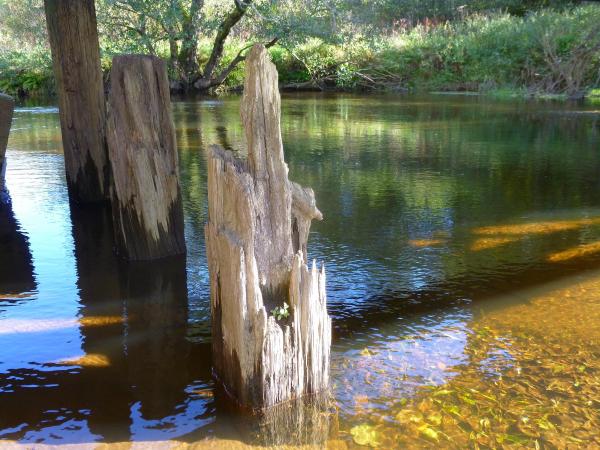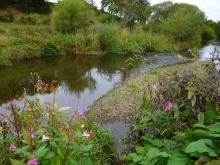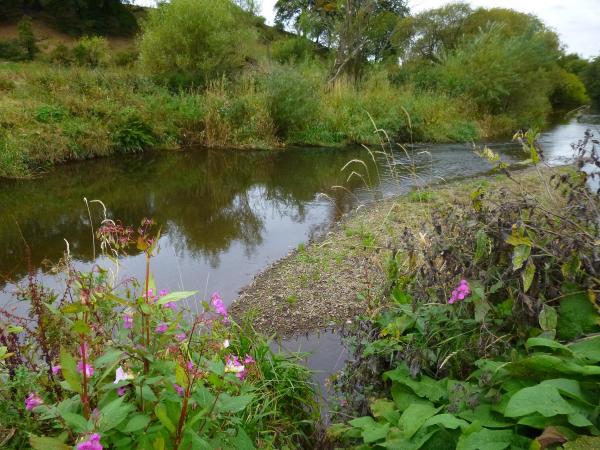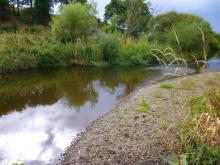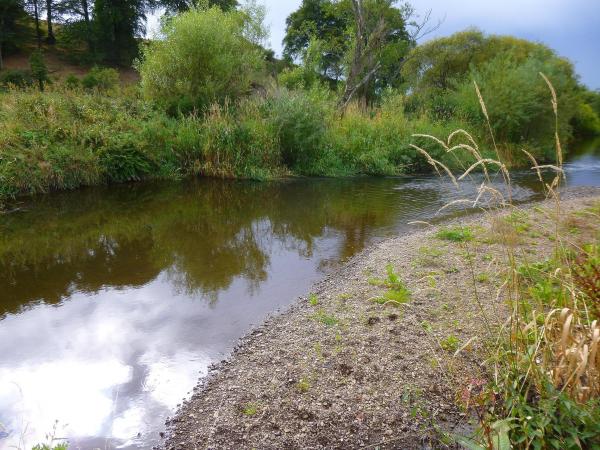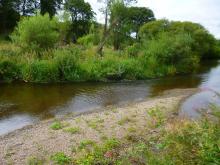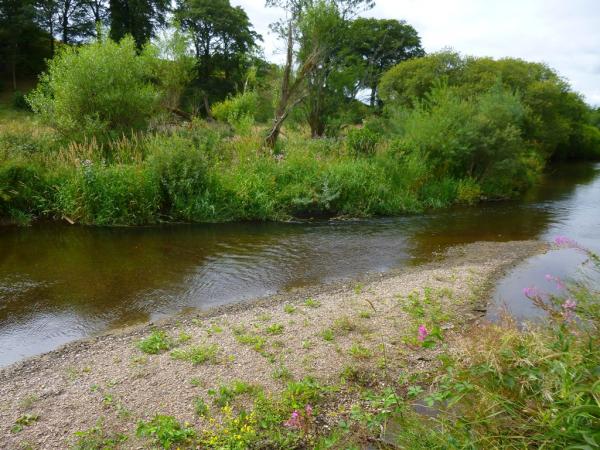Saturday, January 11th
12.15 pm
Temperature: 3c
There is a moderate NW wind keeping an edge on the temperature, although for the first time in what seems like several weeks the hills are clear of low cloud and the air is characteristically clear in keeping with the westerly weather pattern.
Blue sky and just a few puffy cumulus clouds are the order of the day.
The ground water in the ploughed furrows is still frozen over, though the low sun has just started to work on these.
The fine weather seems to have stirred the crows back into life, and they are back to their usual noisy selves in the tall trees that line the far bank and the old railway line beyond the field.
I make my way up the bank and disturb the resident heron – as usual – along with a lone moorhen.
I think this is the first time I have seen moorhens on this stretch. This little waterfowl is always an attractive sight with the red beak which quickly distinguishes it from its cousin the coot, often seen in the same piece of water – although the moorhen is I recall a more aggressive bird than the larger coot, and will defend its patch vigorously against intruders.
My attention is grabbed by a low-growing birch tree which grows out almost horizontally over the river from the bottom of the bank. Today a fair amount of it is submerged, but branches which are almost a metre clear of the surface are wearing dried out grass and roots which were carried by the highest of the recent spates. I take a picture to record this sight.
Further up the bank, I also photograph the section of bank which has fallen victim to the gradual erosion of the flood water and has now completely collapsed, leaving the footpath at this section a risky proposition.
The river has dropped a lot, and is amazingly clear – even more so than at any point during the long, dry summer as far as I can recall. Even this low sun seems to illuminate the shingle bed in the streamier sections, creating a dazzling, shimmering picture.
A chainsaw fires up, and I can see somebody working again on the large tree on edge of the woods that came down in the storms a few weeks ago.
As I reach the red bridge pool, I can see more evidence of the height of the most serious flood : in the form of silt deposited over the ploughed field; and even a substantial old heavy branch left high and dry by the receding waters last week, I have to conclude.
The silt covering reaches out several metres into the field. Standing back and doing some visualisation, it seems that since my last visit – when the river was already at the highest I have seen it all year – the level has been over a metre higher than this, which would have put the surface close to the underside of the bridge itself.
I wish I had seen that, and am sure that others will have been down with their cameras to record that impressive sight.
Descending the short path to the corner pool from the field, I am struck that something seems to be different – as if somebody has re-arranged the objects in a picture that one passes every day.
Then I can see it: the flood has created a new feature in the pool .
A fresh shingle spit has formed further out in the river, narrowing the throat and emphasising the rapid section as the same volume of water is forced through a narrower space, creating more turbulence and a faster stream here.
I set about taking my usual trio of pictures ,recording the same scenes on every visit for reference purposes as the year progresses and the river and its surrounds subtly change.
I assess the height against the old stump gauge, and put it this week as at +50cm . This is 60cm lower than it was on my last visit , but over a metre below the more recent peak.



